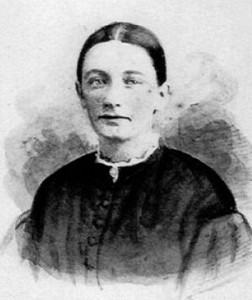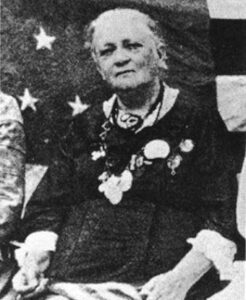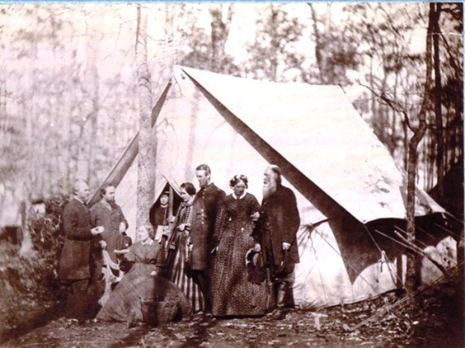Editor’s Note: March is Women’s History Month, a perfect time to learn about the impact that women had on nursing in the Civil War. This post originally appeared on the website of the Clara Barton Missing Soldiers Office Museum. You’re invited to learn more about Cornelia Hancock at the National Museum of Civil War Medicine on Saturday, March 4. Continue the story by exploring the “Charity Afire” exhibit at the Seton Shrine in Emmitsburg, which examines the medical care provided by the Daughters and Sisters of Charity after the Battle of Gettysburg.

Largely forgotten today, Cornelia Hancock was one of the best known and beloved nurses of the Army of the Potomac during the Civil War. Throughout the war, from the Battle of Gettysburg to Appomattox, she maintained a long association with the 14th Connecticut Volunteers through her work in 2nd and 3rd Corps hospitals to which she was assigned. She was well known by sight in the Army of the Potomac. She was not associated with either the Christian Commission or the Sanitary Commission or any other formal organization, although both the Christian Commission and the Sanitary Commission supported her requests for supplies without question. She was a force unto herself. She never wrote for publication during or after the war. After her death a niece inherited her letters and ultimately published them in book form. Her letters are considered some of the very best descriptions of the aftermath of the battle of Gettysburg.
Cornelia Hancock was a 23 year old Quaker girl from Salem, NJ who after hearing the news of the terrible battle at Gettysburg determined to go to the soldiers. The 12th New Jersey Regiment to which many neighbors and relatives enlisted was brigaded with the 14th Connecticut. She got her brother-in-law, a prominent Philadelphia doctor who was going to aid the soldiers at Gettysburg, to agree she could come along with him to nurse. When she and her female chaperone met Dorthea Dix at the train station in Baltimore organizing relief, Dix objected to Cornelia because she was young, beautiful, and had “rosy cheeks.” Dix desperate for nurses accepted every female volunteer but Cornelia, rejecting her out of hand and refusing to allow her to proceed to the Battlefield. While her capable chaperone and Dix argued away about her, Cornelia quietly boarded the train to Gettysburg as it pulled out of the station. She arrived at the battlefield on July 6, 1863, two days after the battle ended and became a legend to the soldiers of the Second Corps throughout the war for her capable and dedicated ministrations to the men. Unlike Clara Barton and other well-known women nurses, she never published or sought notoriety, but was as well-known as they were throughout the Army and perhaps more so. Often she was the only woman allowed in the areas where she nursed. She never associated herself officially with any formal organization, but every commission supported her and saw to it she was supplied with whatever supplies she requested for the soldiers. Her requests to the Army for supplies were also honored without question.
Upon her arrival at Gettysburg, Cornelia immediately went to work at the 2nd Army Corps hospital at the Jacob Schwartz Farm. She was the first woman to enter this hospital. During the evenings she stayed at Dr. Horner’s residence on the north side of Chambersburg Street diagonally across from the Lutheran Church from July 6 through September, when she moved her lodging to Camp Letterman. On July 7, 1863 she wrote home to a cousin, “there are no words in the English language to express the sufferings I witnessed today.” She would witness so many more sufferings before the war had ended and always met them head on doing all she could and what was best for her soldiers.

She lived to 87 and never married. She lived her life to the fullest. She was involved in numerous successful charities until her death and was very well known in Victorian America for her accomplishments in helping others. She may perhaps have been one of the first social workers in the United States. She dedicated her life to service of others. During the Civil War she was one of the most selfless and dedicated volunteer nurses to the men of the Army of the Potomac.
Photographs, from top: U.S. Sanitary Commission members at Gettysburg, photo from Gettysburg National Military Park via Crossroads of War; young Cornelia Hancock; Hancock in her later years courtesy of New Jersey Historical Society, via NPS.

